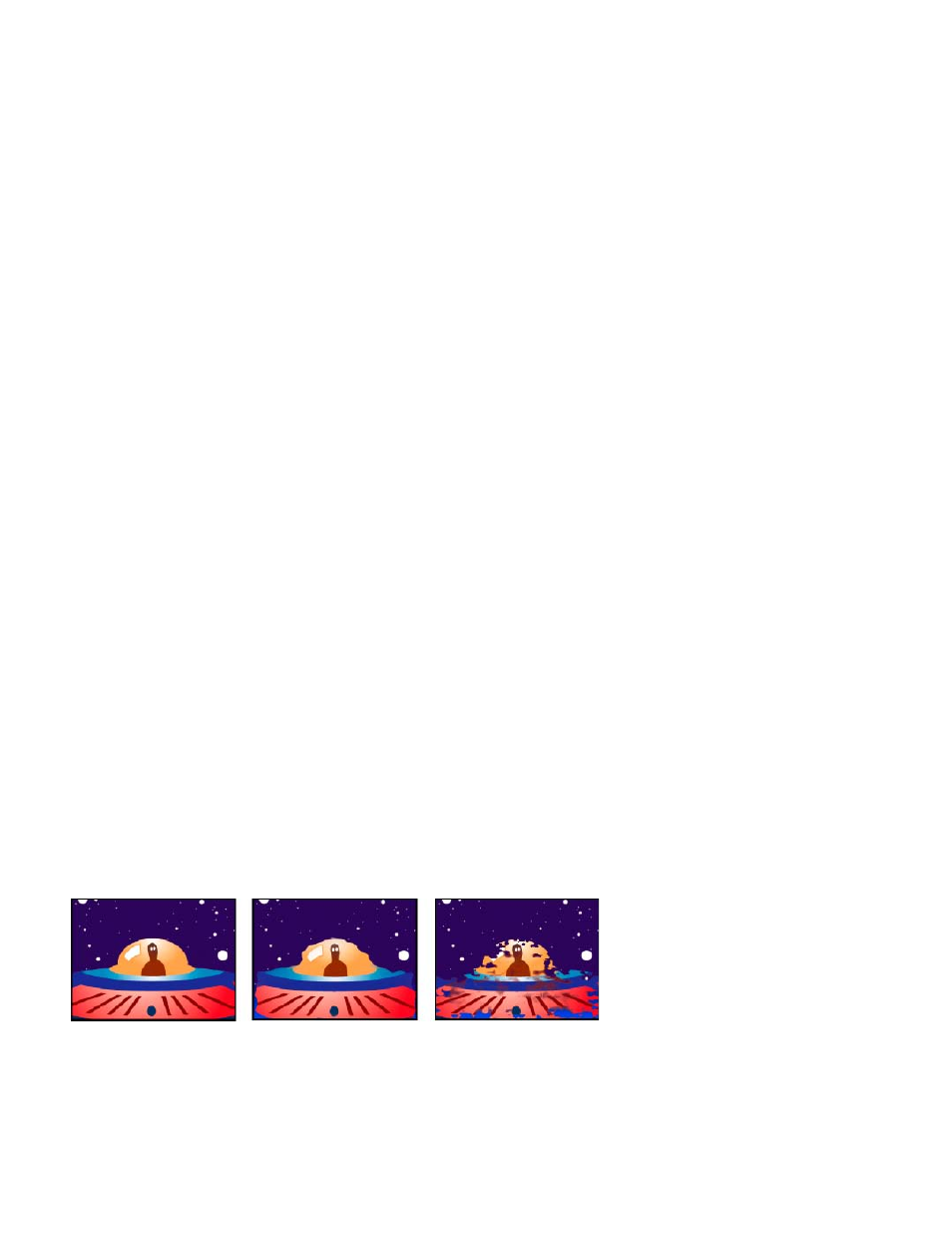Adobe Premiere Pro CS6 User Manual
Page 424

Paint On Transparent Causes only the strokes themselves to appear, leaving the clip transparent between the strokes.
Paint On White/Paint On Black Applies strokes over a white or black background.
Blend With Original The effect’s transparency. The result of the effect is blended with the original image, with the effect result composited on top.
The higher you set this value, the less the effect affects the clip. For example, if you set this value to 100%, the effect has no visible result on the
clip; if you set this value to 0%, the original image doesn’t show through.
Color Emboss effect
The Color Emboss effect works like the Emboss effect, without suppressing the image’s original colors.
Emboss effect
The Emboss effect sharpens the edges of objects in the image and suppresses colors. The effect also highlights the edges from a specified angle.
Direction The direction from which the highlight source shines.
Relief The apparent height of the embossing, in pixels. The Relief setting actually controls the maximum width of highlighted edges.
Contrast Determines the sharpness of the image.
Blend With Original The effect’s transparency. The result of the effect is blended with the original image, with the effect result composited on top.
The higher you set this value, the less the effect affects the clip. For example, if you set this value to 100%, the effect has no visible result on the
clip; if you set this value to 0%, the original image doesn’t show through.
Find Edges effect
The Find Edges effect identifies the areas of the image that have significant transitions and emphasizes the edges. Edges can appear as dark
lines against a white background or colored lines against a black background. If the Find Edges effect is applied, images often look like sketches
or photographic negatives of the original.
Invert Inverts the image after the edges are found. When Invert isn’t selected, edges appear as dark lines on a white background. When Invert is
selected, edges appear as bright lines on a black background.
Mosaic effect
The Mosaic effect fills a clip with solid-color rectangles, pixelating the original image. This effect is useful for simulating low-resolution displays
and for obscuring faces. You can also animate it for a transition.
Horizontal/Vertical Blocks The number of blocks in each row and column.
Sharp Colors Gives each tile the color of the pixel in the center of the corresponding region in the original image. Otherwise, each tile is given the
average color of the corresponding region in the original image.
Posterize effect
The Posterize effect lets you specify the number of tonal levels (or brightness values) for each channel in an image. The Posterize effect then
maps pixels to the closest matching level. For example, choosing two tonal levels in an RGB image gives you two tones for red, two tones for
green, and two tones for blue. Values range from 2 to 255.
Level The number of tonal levels for each channel.
Replicate effect
The Replicate effect divides the screen into tiles and displays the whole image in each tile. Set the number of tiles per column and row by
dragging the slider.
Roughen Edges effect
The Roughen Edges effect roughs up the edges of a clip’s alpha channel by using calculations. It gives rasterized text or graphics a naturally
rough look, like that of eroded metal or typewriter text.
Original image (left), with Edge Type set to Roughen (center), and with Rusty Color (right)
Edge Type What kind of roughening to use.
Edge Color The color to apply to the edge for Rusty Color or Roughen Color, or to the fill for Photocopy Color.
Border How far, in pixels, the effect extends inward from the edge of the alpha channel.
Edge Sharpness Low values create softer edges. High values create sharper edges.
Fractal Influence The amount of roughening.
Scale The scale of the fractal used to calculate the roughness.
420
